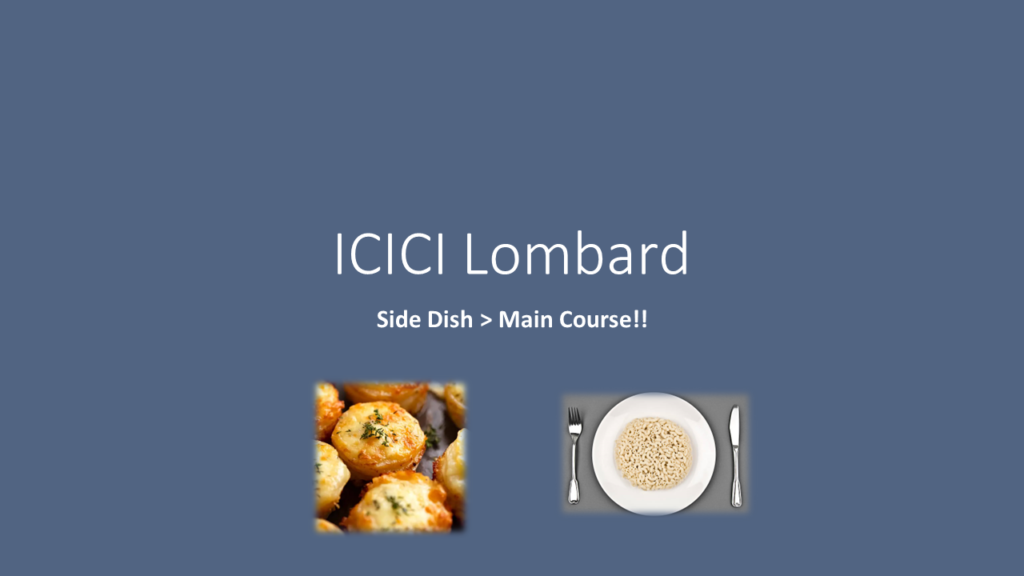Warren Buffett provides an example from the insurance world on why it is more important to do what is right than to simply do something:
“We hear a great many insurance managers talk about being willing to reduce volume in order to underwrite profitably, but we find that very few actually do so. Phil Liesche (manager National Indemnity Company’s insurance operation) is an exception: If business makes sense, he writes it; if doesn’t, he rejects it. It is our policy not to lay off people because of the large fluctuations in work load produced by such voluntary volume changes. We would rather have some slack in the organization from time to time than keep everyone terribly busy writing business on which we are going to lose money.“
As Blaise Pascal summed it succinctly: “I have often said that the sole cause of man’s unhappiness is that he does not know how to sit quietly in his room.”
While the above makes absolute sense, however, on checking one of the largest general private insurance company’s numbers, ICICI Lombard, I realised that the company has not made any underwriting profit since the last 7 years!! In fact, it has not made any underwriting profit in any of these years. The company’s cumulative underwriting losses over the last 7 years was INR ~INR 50 BLN, i.e., ~INR 5,000 crs.
Insurers receive premiums upfront and pay claims later. This collect-now, pay-later model leaves insurers holding large sums of money, also known as “float” – this is a contingent liability which will eventually go to the policy holders should a claim arise. However, if the premiums exceed the total of expenses and eventual losses, the insurance operation registers an underwriting profit which gets added to the investment income the float produces. When such a profit is earned, insurers enjoy the use of free money – and, better yet, get paid for holding it.
Hope of this (free) float attracts intense competition, leading to underwriting losses in the industry. This loss, in effect, is what the industry pays to hold its float. ICICI Lombard is no exception.
Underwriting Profit / Loss = Premium earned (net) – Net Claims Incurred – Net Commissions paid – Operating Expenses
| Years | 2022 | 2021 | 2020 | 2019 | 2018 | 2017 | 2016 |
| (INR in billions) | |||||||
| Premium earned (net) | 130.32 | 100.14 | 94.04 | 83.75 | 69.12 | 61.63 | 48.21 |
| Less: Net Claims Incurred | 97.82 | 68.71 | 68.52 | 63.08 | 53.15 | 49.54 | 39.28 |
| Less: Net Commissions paid | 6.34 | 6.01 | 3.64 | 2.23 | 2.84 | 4.34 | 3.28 |
| Less: Operating Expenses | 39.20 | 27.34 | 22.94 | 20.14 | 21.12 | 19.82 | 17.11 |
| Underwriting Loss | -13.04 | -1.92 | -1.06 | -1.70 | -7.99 | -12.07 | -11.46 |
Another parameter by which one can evaluate long-term performance of an insurance company is Combined Ratio, i.e., sum of claims incurred and operating expenses measured as a percentage of earned premium:
Combined Ratio = Net Claims Incurred / Premium earned (net) + Operating Expenses / Premium earned (net)
Combined Ratio = Loss Ratio + Expense Ratio
| Years | 2022 | 2021 | 2020 | 2019 | 2018 | 2017 | 2016 |
| – Loss Ratio | 75.1% | 68.6% | 72.9% | 75.3% | 76.9% | 80.4% | 81.5% |
| – Expense Ratio | 30.1% | 27.3% | 24.4% | 24.0% | 30.6% | 32.2% | 35.5% |
| Combined Ratio | 105.1% | 95.9% | 97.3% | 99.4% | 107.5% | 112.5% | 117.0% |
Despite the company not generating any underwriting profit, i.e., no money coming from its core operations, the company still has been able to generate net profits over the years. How? It’s through Investment Income!! So, the side dish compensates for the main course!!
| Years | 2022 | 2021 | 2020 | 2019 | 2018 | 2017 | 2016 |
| (INR in billions) | |||||||
| Income From Investments | 22.91 | 16.64 | 15.43 | 13.36 | 11.27 | 12.83 | 11.57 |
| Net Profit | 12.71 | 14.73 | 11.94 | 10.49 | 8.62 | 7.02 | 5.07 |
In the concalls, Management has indicated that they would be able to decrease the overall combined ratios in the next couple of years!!! This is obviously a good expectation setting!! At least, history doesn’t suggest that!
Despite the scale up in volume, operating leverage has been minimal for ICICI Lombard at the moment, since they would continue to invest in distribution and digital platforms for the next couple of quarters.
With so many insurers, each selling ‘commodity-like’ products with negligible differentiation, the insurance industry continues to have heightened competitive intensity, with premiums remaining soft for a long period of time. Underwriting losses obviously is an outcome of this!
Management also needs to be prudent in reserving for claims inflation and probable losses. ICICI Lombard’s management believes that many insurers hold significantly lower percentages of inflation and claims reserves, which is inadequate, unlike them. As an investor, it is obviously very difficult to understand these subtleties. You only realize who has been swimming naked till the tide runs out!!
While industry growth continues to remain high, with minimal insurance penetration, however,
Side-Dish (Investment Income) > Main course (Underwriting Income)+ Commodity-like product + Multiple players + Over-capacity + Chances of deliberate or estimation error – Each of these would continue to remain for a long-period of time!!
Hence, would continue to refrain from investing in this insurer!!
P.S. These are my thoughts and not a recommendation!!


Great analysis!!